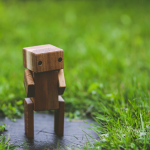
29 Oct The Shichida Method
Fostering a love of learning is central to the Shichida Method of young children’s education.
So what is the Shichida Method?
The Shichida Method, developed by Professor Makoto Shichida in Tokyo more than 30 years ago, focuses on whole-brain education – developing the right and left brain simultaneously so children can reach their full potential.
According to Shichida, when both sides of the brain are developed equally, a child not only learns knowledge and practical skills, but how to be imaginative, loving, courageous, respectful and responsible. Examples of activities used in the Shichida classroom include:
- Image play – for example, imagining the scenes of a story as it is being narrated.
- Memory activities – such as replicating a sequence of pictures after they have been shown.
- Flashcards – increasing vocabulary, general knowledge, exposure to different languages and culture.
- Sensory activities.
- Critical-thinking activities.
- Letters and numbers – familiarisation with alphabets/words and numbers.
- Music
Celebrating Children’s Individual Personalities
Every child has unique talents to be nurtured and cultivated. Shichida shifts the focus from academic achievement and encourages children not to compare themselves with others. We look at positives rather than shortcomings, and at children being the best person they can be.
Enhancing The Child-Parent Bond
Shichida’s vision can only be achieved with the help of dedicated parents, whose bond with their children is strengthened during its early-learning programs.
Shiao-Ling Lim is managing director of Shichida Australia.
Words by Shiao-Ling Lim




